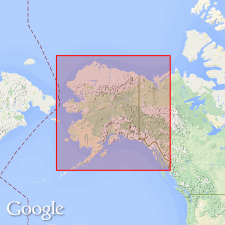
- Usage in publication:
-
- Corwin series
- Modifications:
-
- Named
- Dominant lithology:
-
- Sandstone
- Arkose
- Shale
- Slate
- Coal
- AAPG geologic province:
-
- Alaska Northern region
Summary:
[Named for Corwin Bluff, about 30 mi east of Cape Lisburne] Occurs on coast near Wainwright Inlet and extends southwestward 180 mi to near Cape Lisburne. Consists of medium to heavy-bedded impure, gray and brown sandstone and arkose with shale, shaly slate and coal. Its geological horizon is known on fossil evidence to be above Fickett series (new) and below Anaktoovuk series (new). Age is provisionally assigned to Jurassic and Cretaceous.
Source: GNU records (USGS DDS-6; Menlo GNULEX).
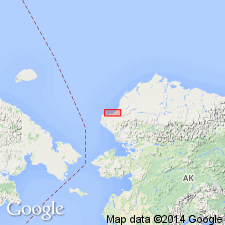
- Usage in publication:
-
- Corwin formation*
- Modifications:
-
- Revised
- Age modified
- Biostratigraphic dating
- AAPG geologic province:
-
- Alaska Northern region
Summary:
Corwin formation of Collier (1906) is restricted to predominantly nonmarine facies of Nanushuk group which overlies and intertongues with Kukpowruk formation (new) of Nanushuk group and unconformably underlies Prince Creek formation of Colville group. Type locality designated as exposures in Corwin Bluff vicinity in sea cliffs from 0.6 mi west of Thetis Creek and west for 11 mi, then 0.3 mi upstream along small creek which enters ocean, northwestern AK. Measured type section at Corwin Bluff vicinity is about 15,500 ft (4723 m) thick. Age is late Early and Late Cretaceous, not older than middle Albian based on plant remains identified by Roland W. Brown of USGS.
Source: GNU records (USGS DDS-6; Menlo GNULEX).
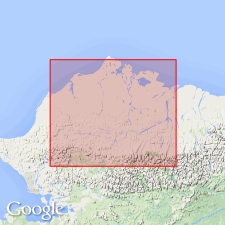
- Usage in publication:
-
- Corwin formation
- Modifications:
-
- Not used
- AAPG geologic province:
-
- Alaska Northern region
Summary:
Nonmarine sequence above 4600 ft in Kaolak test well 1 is here tentatively assigned to Chandler formation of Nanushuk group to retain terminology used in other test wells in Naval Petroleum Reserve No.4. However, in closest outcrops to southwest, nonmarine rocks have been referred to Corwin formation.
Source: GNU records (USGS DDS-6; Menlo GNULEX).
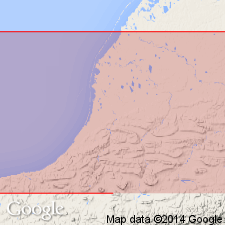
- Usage in publication:
-
- Corwin formation*
- Modifications:
-
- Overview
- AAPG geologic province:
-
- Alaska Northern region
Summary:
Detailed description of unit in Utukok-Corwin region, full description of type section, stratigraphic relations, thicknesses at many locations, list of fossils and their localities included in this overview.
Source: GNU records (USGS DDS-6; Menlo GNULEX).
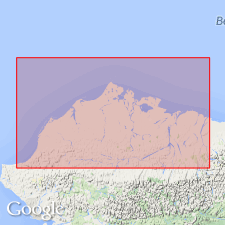
- Usage in publication:
-
- Corwin Formation*
- Modifications:
-
- Age modified
- AAPG geologic province:
-
- Alaska Northern region
Summary:
Measured type section of Corwin Formation of Nanushuk Group by Sable (1956) includes repetitions caused by faulting; recalculated thickness is 2743 m. Smiley (1969) indicated that [Corwin Formation of] Nanushuk Group ranges from Albian to Cenomanian(?) age along Kukpowruk River sections northeast of Corwin Bluff on basis of plant fossils. Depositional environment of Corwin delta is discussed.
Source: GNU records (USGS DDS-6; Menlo GNULEX).
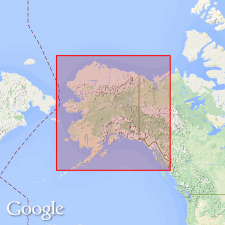
- Usage in publication:
-
- Corwin Formation
- Modifications:
-
- Biostratigraphic dating
- AAPG geologic province:
-
- Alaska Northern region
Summary:
Dinosaur tracks found at sec.13 T1S R40W, cutbank of Kokolik River and at sec.12 T1S R39W, on Avingak Creek, tributary to Kokolik River where skin impressions also found in Corwin Formation about 790 m above base. Skin impressions were identified by G.E. Lewis of USGS (written commun., 1979) as belonging to ornithopodus or ornithischian dinosaur of Family Hadosauridae. Upper part of Corwin Formation is assigned to late Late Cretaceous age (Campanian or Maestrichtian) on basis of fossil dinosaur. Age of lower part of Corwin is late Albian and possibly early Cenomanian age.
Source: GNU records (USGS DDS-6; Menlo GNULEX).
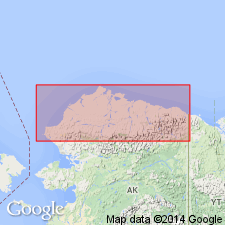
- Usage in publication:
-
- Corwin Formation†
- Modifications:
-
- Abandoned
- AAPG geologic province:
-
- Alaska Northern region
Summary:
Pg. 5 (fig. 4), 6-8 (table 1), 12. †Corwin Formation of Nanushuk Group. Abandoned. Rocks reassigned to unnamed upper part (nonmarine) of Nanushuk Formation (revised). [See Nanushuk.]
Source: Publication.
For more information, please contact Nancy Stamm, Geologic Names Committee Secretary.
Asterisk (*) indicates published by U.S. Geological Survey authors.
"No current usage" (†) implies that a name has been abandoned or has fallen into disuse. Former usage and, if known, replacement name given in parentheses ( ).
Slash (/) indicates name conflicts with nomenclatural guidelines (CSN, 1933; ACSN, 1961, 1970; NACSN, 1983, 2005, 2021). May be explained within brackets ([ ]).

